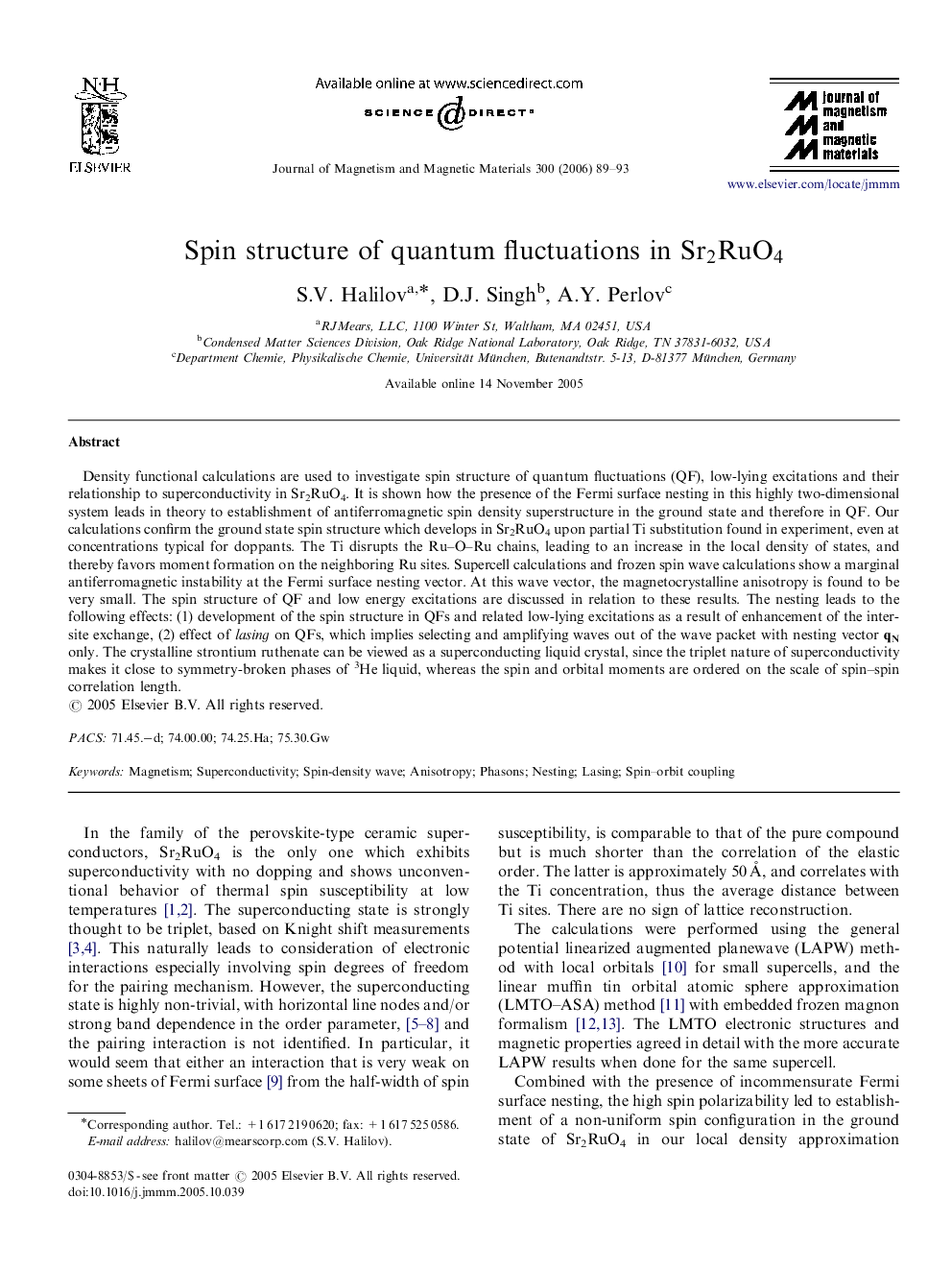| Article ID | Journal | Published Year | Pages | File Type |
|---|---|---|---|---|
| 1803322 | Journal of Magnetism and Magnetic Materials | 2006 | 5 Pages |
Abstract
Density functional calculations are used to investigate spin structure of quantum fluctuations (QF), low-lying excitations and their relationship to superconductivity in Sr2RuO4. It is shown how the presence of the Fermi surface nesting in this highly two-dimensional system leads in theory to establishment of antiferromagnetic spin density superstructure in the ground state and therefore in QF. Our calculations confirm the ground state spin structure which develops in Sr2RuO4 upon partial Ti substitution found in experiment, even at concentrations typical for doppants. The Ti disrupts the Ru-O-Ru chains, leading to an increase in the local density of states, and thereby favors moment formation on the neighboring Ru sites. Supercell calculations and frozen spin wave calculations show a marginal antiferromagnetic instability at the Fermi surface nesting vector. At this wave vector, the magnetocrystalline anisotropy is found to be very small. The spin structure of QF and low energy excitations are discussed in relation to these results. The nesting leads to the following effects: (1) development of the spin structure in QFs and related low-lying excitations as a result of enhancement of the inter-site exchange, (2) effect of lasing on QFs, which implies selecting and amplifying waves out of the wave packet with nesting vector qN only. The crystalline strontium ruthenate can be viewed as a superconducting liquid crystal, since the triplet nature of superconductivity makes it close to symmetry-broken phases of 3He liquid, whereas the spin and orbital moments are ordered on the scale of spin-spin correlation length.
Keywords
Related Topics
Physical Sciences and Engineering
Physics and Astronomy
Condensed Matter Physics
Authors
S.V. Halilov, D.J. Singh, A.Y. Perlov,
